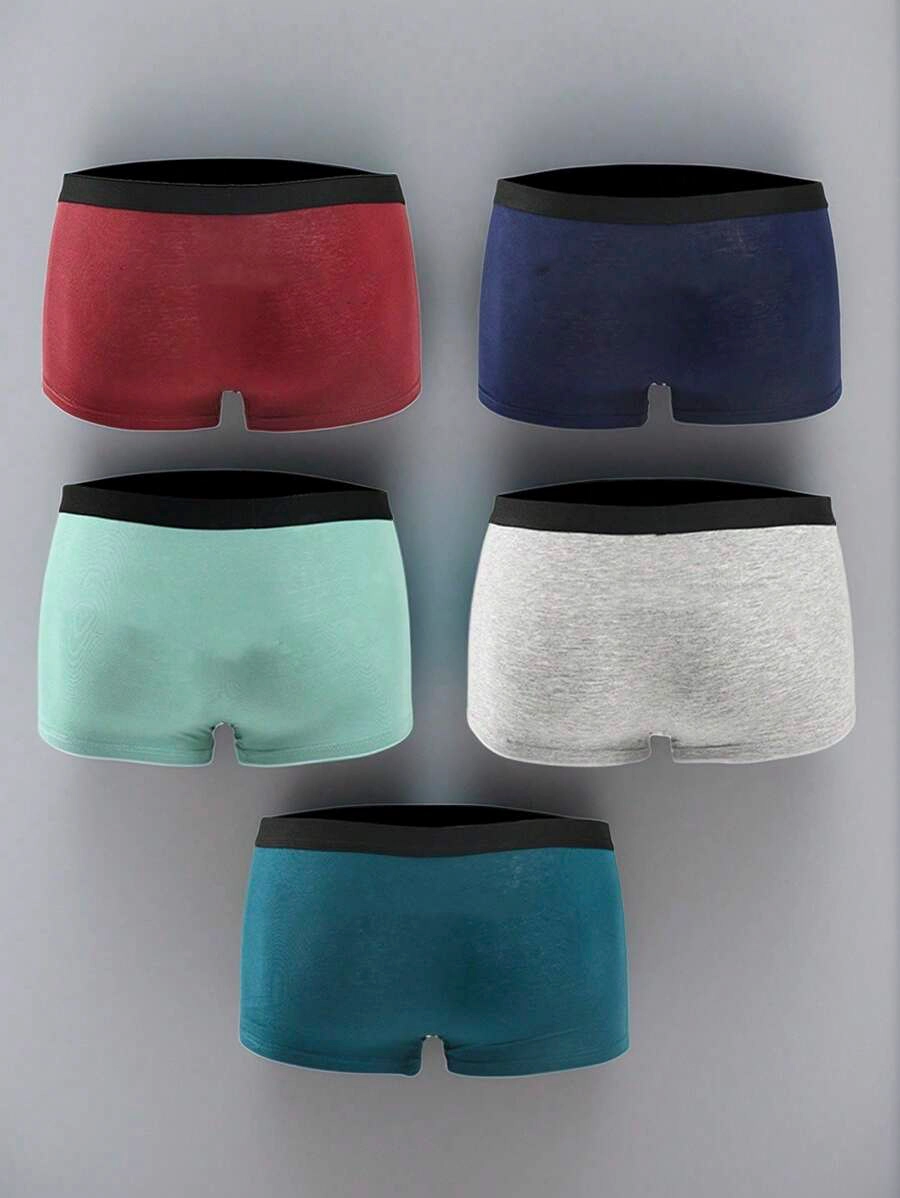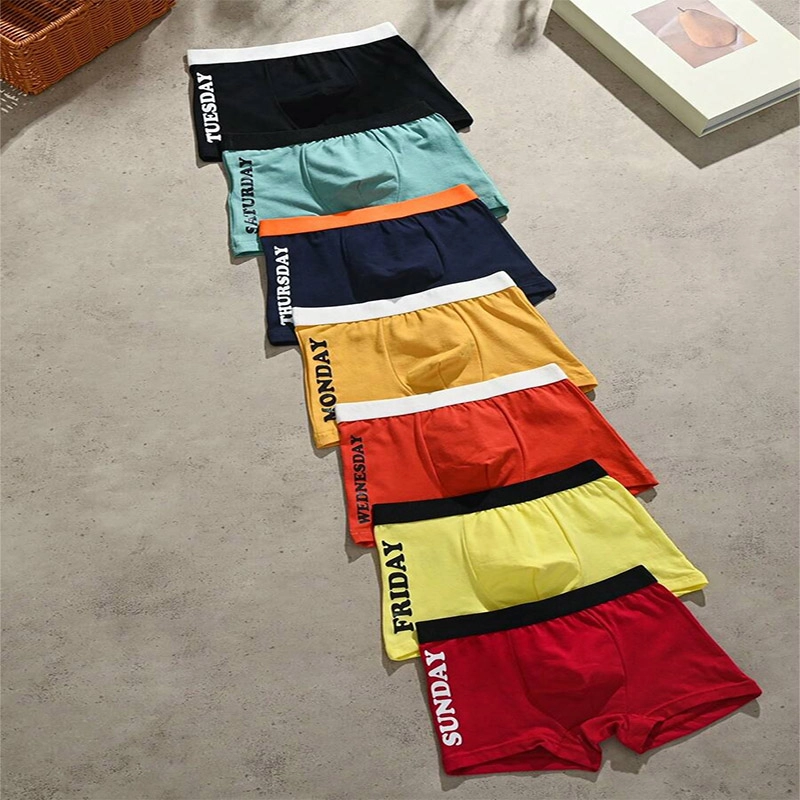- All
- Product Name
- Product Keyword
- Product Model
- Product Summary
- Product Description
- Multi Field Search
Views: 220 Author: snkidsunderwear Publish Time: 2025-10-28 Origin: Site











Content Menu
● What makes organic underwear different
● Key fabrics used in boys' underwear
● Certifications you should recognize
● Comfort and fit considerations for boys
● Health and safety considerations
● Environmental impact and sustainability
● Cost considerations and value
● How to choose the right sets for your child
● The role of ethical considerations in manufacturing
● Common myths about organic underwear
● Practical tips for parents of active kids
● Balancing preferences with practicality
● What to know about sizing and care
● The future of underwear for children
● FAQs
Choosing the right underwear for children can feel overwhelming with so many options on the market. Parents want fabrics that feel comfortable, fit well, and support their child's health and development. This guide dives into the differences between organic and non-organic boy underwear sets, exploring materials, certifications, safety considerations, environmental impacts, price considerations, and practical tips for selecting the best option for your family.

Organic underwear is made from fibers grown without synthetic pesticides or genetically modified organisms, and the production process generally emphasizes reduced chemical use and environmental stewardship. Organic cotton, for example, is cultivated with practices intended to preserve soil health, reduce water runoff, and minimize chemical exposure for farm workers. In the finished product, organic underwear often carries certifications that signify adherence to strict farming and processing standards.
Underwear for kids is typically made from cotton blends, cotton alone, or synthetic fibers. When evaluating organic options, the fabric composition matters:
- Organic cotton blends: These often combine organic cotton with small amounts of elastane or spandex to provide stretch and shape retention.
- Organic cotton: Pure organic cotton offers breathability and softness, making it a common choice for sensitive skin.
- Alternatives in organic fabrics: Some brands experiment with bamboo viscose or recycled fibers, sometimes blended with organic cotton for a balance of softness and durability.
Certifications help shoppers verify organic claims. Look for reputable marks from established standards bodies. Common certifications include:
- Global Organic Textile Standard (GOTS): The most widely recognized certification for organic textiles, addressing both farming and processing steps, including dyeing and finishing.
- OEKO-TEX Standard 100: Focuses on removing harmful substances from textiles, often used in conjunction with organic certifications.
- Organic Content Standard (OCS): Tracks the organic content of a fabric from farm to finished product.
Note that not all brands carry every certification, and some may use local or regional standards. When in doubt, contact the manufacturer for documentation.
Children are active, and underwear should support mobility without chafing or irritation. Consider these factors:
- Waistband: A soft, flat waistband reduces digging and discomfort around the midsection.
- Seams: Flatlock or tagless designs minimize irritation on sensitive skin.
- Breathability: natural fibers like organic cotton wick moisture and allow air circulation, helping to prevent rashes.
- Size and growth room: Kids grow quickly, so choose sizes that accommodate growth while still staying in place during activity.
Parents often worry about skin sensitivity, allergies, and chemical exposure. Organic underwear can reduce overall chemical exposure due to farming and processing practices. However, it's important to examine the entire supply chain:
- Dyes and finishes: Even organic cotton can be dyed with substances that may irritate sensitive skin if not properly tested. Look for low-impact dyes and proper certifications.
- Chlorine and optical brighteners: Some processes rely on chlorine bleaching; organic options that avoid chlorine or use safer bleaching methods can reduce skin contact concerns.
- Elastic components: Elastics may contain latex or other additives that can trigger irritation for some children. Check for hypoallergenic or latex-free options if necessary.
Choosing organic underwear often aligns with broader environmental goals:
- Reduced pesticide use: Organic farming limits synthetic pesticides, benefiting ecosystems.
- Water management: Organic practices sometimes emphasize soil moisture retention, with varying effects on water use.
- Waste and lifecycle: Some brands offer recycled or recyclable packaging, and many provide programs for responsible disposal or recycling of old underwear.
Keep in mind that organic production is not automatically perfect. Transportation, dye waste, and manufacturing efficiency also contribute to the overall environmental footprint. If sustainability is a priority, seek brands that publish transparent sustainability reports and lifecycle assessments.
Organic underwear generally costs more than conventional options due to farming practices, certification processes, and often smaller-scale production. When evaluating value, consider:
- Longevity: Look for reinforced seams and durable fabrics that withstand multiple wash cycles.
- Comfort and fit: A comfortable garment can reduce daily friction and wardrobe changes due to irritation.
- Health priorities: If your child has sensitive skin or known allergies, organic options may offer meaningful health benefits.
To make an informed choice, follow these practical steps:
- Identify priorities: Decide whether organic certification, fabric feel, affordability, or environmental impact takes precedence.
- Check the label: Read fabric composition, care instructions, and certifications listed on the product tag.
- Inspect construction: Look for flat seams, a snug but non-restrictive waistband, and a proper rise that sits comfortably on the hips.
- Try multiple sizes: If your child is between sizes, consider the next size up with an adjustable waistband to accommodate growth.
- Wash before wear: For new underwear, a gentle wash before first use can remove loose fibers or residues and soften the fabric.
Beyond personal health, ethical manufacturing practices matter to many families. Responsible brands often publish information about:
- Worker safety: Safe working conditions and fair wages in the supply chain.
- Traceability: Clear information about where materials originate and how products are produced.
- Animal welfare: For brands offering organic options, some may avoid animal-derived materials or pursue cruelty-free dyeing processes.
- Myth: Organic means indestructible. Reality: Organic fabrics can be very durable, but all fibers wear over time with repeated washing and heavy use.
- Myth: Organic always costs more. Reality: Price gaps vary by brand, and some organic options can be affordable, especially during sales or in bundles.
- Myth: Organic is only about cotton. Reality: Organic options may include blends or alternative organic fibers, all processed under organic standards.
- For sports and play: Choose underwear with good stretch and moisture management to keep kids comfortable during activity.
- For sensitive skin: Start with a breathable, hypoallergenic option and monitor for any irritation after wear.
- For travel and laundry: Pack a few extra sets and plan for regular washing routines to maintain hygiene during trips.
Every family has unique needs. Organic underwear can be a strong choice for those prioritizing health, safety, and environmental concerns, but it's not the only option. The best choice is the one that aligns with your child's comfort, your budget, and your values.
- Sizing: Different brands may have different sizing charts. Always consult the specific brand's size guide.
- Care: Follow washing instructions closely. Mild detergents, cold or warm water, and avoiding high-heat drying help preserve fabric integrity and color.
As consumer awareness grows, brands are increasingly transparent about sourcing, chemical use, and lifecycle impacts. Innovations in fabric technology, dye chemistry, and sustainable production practices may continue to reduce environmental footprints while enhancing comfort and durability for young wearers.

What certifications should I look for when buying organic boys' underwear sets?
Look for GOTS as a primary processing and labeling standard, complemented by OEKO-TEX Standard 100 or OCS where applicable. These certifications help verify organic content, safe dyes, and responsible production practices.
Are organic underwear sets more breathable than non-organic ones?
Breathability often depends on the fabric composition and weave rather than certification alone. Organic cotton fabrics can be very breathable, especially when paired with light, airy weaves. The presence of elastics or blends with synthetic fibers can affect moisture transfer.
Can organic underwear prevent skin irritation for my child?
Organic fabrics can reduce exposure to certain chemicals found in conventional textiles, which may benefit children with sensitive skin. However, irritation can still occur from dyes, elastics, or washing detergents. Choosing hypoallergenic dyes and gentle detergents can help.
Do organic underwear sets last as long as conventional ones?
Durability depends on fabric quality, stitching, and care. Some organic cotton blends with added fibers like elastane can offer comparable longevity to conventional options if cared for properly.
Is price a good indicator of quality in organic underwear?
Not always. While organic products often cost more due to certification and farming practices, price alone does not guarantee quality. Look for construction details, fabric weight, and customer reviews to assess value.
What about sustainability beyond organic farming?
Consider the full lifecycle: production efficiency, dyeing processes, packaging, and end-of-life recyclability. Brands with transparent sustainability reports and take-back programs typically offer stronger overall environmental stewardship.
Hot Tags: China, Global, OEM, private label, manufacturers, factory, suppliers, manufacturing company
Best Affordable Boy Underwear Sets Without Compromising Quality
Organic Vs. Non-Organic Boy Underwear Sets: What Parents Should Know?
Seamless Vs Regular Girls Minimalist Camisole Underwear: Which Offers More Comfort?
Cotton Vs Synthetic: What Material Works Best for Girls Minimalist Camisole Underwear?
Girls Minimalist Camisole Underwear Vs Sports Bras: What’s The Best Choice for Active Kids?
Minimalist Camisole Underwear Vs Regular Underwear for Girls: Key Differences Explained
Girls Minimalist Camisole Underwear Vs Traditional Styles: Which Is Better for Comfort?